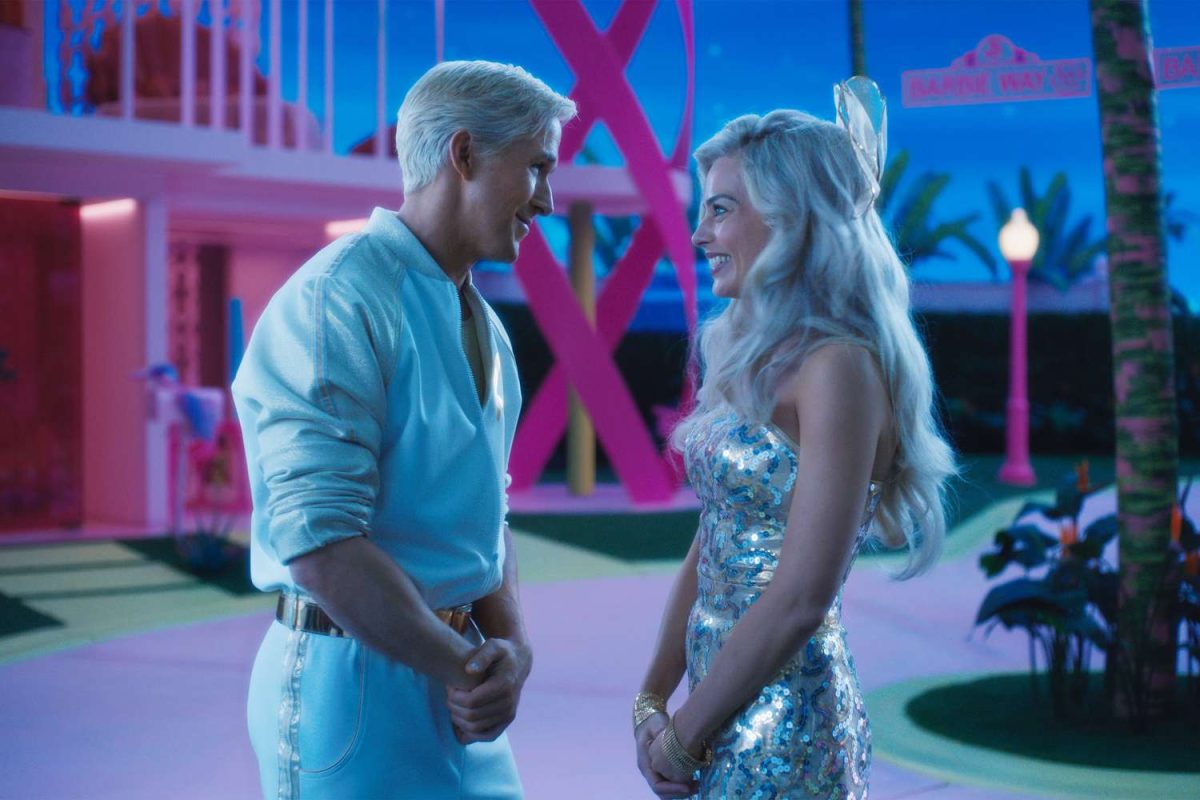“Barbie”
She’s everything, and he’s just Ken.
Set in the vibrant pink and woman ruled Barbieland, “Barbie” centers around Stereotypical Barbie and Ken’s encounter with the real world. After exploring the real world and finding out women are not as respected as men, Barbie is left feeling inadequate. Ken, however, is intrigued by the patriarchy he is faced with and is fixated on overturning Barbieland into a Mojo Dojo Casa House ruled by men.
“I think Ken represents a man who thinks he knows what is going on but does it in the wrong way,” Jeffrey McRae (12) said. “[Ken] wants to change for the better, [but] none of the Kens usually had power, so him gaining power was a new thing [for him].”
Originally interpreted as a fun, pink movie by most, “Barbie” dives deeper into the struggles that women face in society, from beauty standards to power imbalances to motherhood. The movie dismantles the perfect Barbie doll smile to showcase the struggles that Barbie, and women everywhere, face to please society.
“After watching [Barbie], it definitely opened my eyes to the ‘woman experience’ and how important women are to our society,” Brian Franklin (11) said. “As soon as I stepped out, I was like, [I] have to call my mom and tell her how much I love her. It really opened my eyes to what my mom [and] women in my life do for me.”
“The Little Mermaid”
Ocean waves ripple, the tides slowly rise and there beholds Ariel’s colorful mermaid tail sticking just inches above the water. However, as the camera zooms in further, there is something different about this Ariel—she is Black.
“Out of all the Disney live-action [remakes], this is my favorite,” Rheana Dates (11) said. “[However,] it was worrying because I knew what everyone was going to say: ‘They are turning everything Black; we can’t have anything original.’”
“The Little Mermaid (2023)” manages to follow the majority of the original’s plot while straying away from one prominent feature: Ariel’s race. In the 2023 version, the movie further expands the character and relationship development of Ariel and Prince Eric while giving Prince Eric a personality beyond a handsome face. The movie faced lots of backlash for its racial change, but it gave many Black girls a chance to see themselves in another princess besides Tiana.
“On the internet, you would see all the videos of little [Black] girls saying, ‘Oh my God, she looks just like me,’” Dates said. “It was so happy [to see] because when I was growing up, I only had Princess Tiana, and now people have so many more actresses and characters [to look up to].”

(GOOGLE IMAGES)
“Spider-Man: Across the Spider-Verse”
Spiderwebs canopy the colorful streets of Brooklyn, N.Y., while a radioactive venomous spider is attached to its new beholder—Miles Morales. Set a year after the original movie, “Spider-Man: Across the Spider-Verse” follows the story of now 15-year-old Miles and how he handles being Spider-Man while still trying to live up to his parent’s expectations.
“I think Spider-Man’s great,” Katelyn Morton (9) said. “I really liked all the colors and different styles [because it] stood out a lot. [It is] an action-filled movie that is kind of heartfelt.”
After reuniting with his best friend Gwen Stacy, Miles and Gwen journey across the multiverse, where they encounter a team of Spider-People called the Spider-Society. However, the Spider-Society and Miles soon bump heads as Miles finds out his dad is in danger but is warned not to help. Without the help of the Spider-Society, Miles must use only his wit and skills to save his dad from death.
“I love the fact that people are really loving [Miles] since he’s a Black and Spanish-speaking character,” Franklin said. “I love the fact that more heroes of color are being brought to the light and front stage in cinema. I think that it’s great for our community.”
“The Blackening”
In celebration of Juneteenth weekend, seven Black college alumni reunite in an Airbnb tucked away in the woods, only to find out a killer is among them. As blood paints their trail and death is rapidly knocking at their door, they cannot all die first, right?
“[Black people] always die first [in horror movies],” Dates said. “In the movie, one of the questions [asked by the game] was to name one Black character [who] didn’t die first [in a horror movie], and I still can’t think of an answer.”
The movie’s main action arises when the group is met with a power outage, and they go to find the power box, only to find a caricatural game called “The Blackening.” The voice of the game discloses that it is holding one of their friends prisoner, and they must play the game, or they will all die.
“[‘The Blackening’] was kind of like a parody of its tagline, ‘We can’t all die first’,” Dates said. “It showed lots of aspects of the Black community [and] culture. As a Black person, it is a great comedy and [has] lots of little jokes that only Black people know.”




































